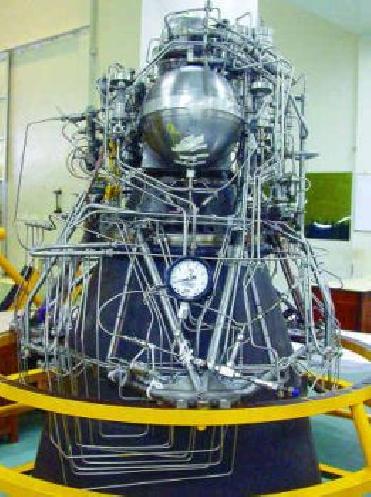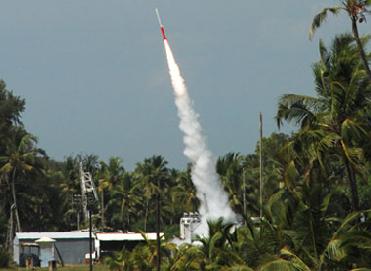
The cryogenic engine that is currently used in GSLV launches is not indigenous. Photo credit: ISRO
NEW DELHI (BNS): Giving a tremendous boost to the efforts of Indian Space Research Organisation (ISRO), the Government has given its go-ahead to the development of a semi-cryogenic engine to power future inter-planetary missions.
India will become the third country after the US and Russia to develop the advanced propulsion system which will be used to launch space shuttles and future space missions.
The Union Cabinet, met under the chairmanship of Prime Minister Manmohan Singh, approved the development of semi-cryogenic engine technology at an estimated cost of Rs 1,798 crore, with a foreign exchange component of Rs 588 crore, for the completion of the project in the next six years, Home minister P Chidambaram told reporters here.
The semi-cryogenic engine will facilitate applications for future space missions such as the Reusable Launch Vehicle, Unified Launch Vehicle and vehicle for inter-planetary missions, he said.
According to ISRO, the semi-cryogenic engines using liquid oxygen and kerosene are considered relatively environment friendly, non-toxic and non-corrosive. The propellants for such engines are safer to handle and store. They also reduce the cost of launch operations.
ISRO successfully conducted the flight acceptance 'hot test' of an indigenous Cryogenic Engine to be used in the next Geosynchronous Launch Vehicle.
In a statement released to the media in Bangalore, the space agency said the test was successfully conducted at the Liquid Propulsion Systems Centre (LPSC), Mahendragiri on December 18. "This cryogenic stage will be used in the next Geosynchronous Launch Vehicle mission -- GSLV- D3.�
The 'hot test' was carried out for a planned duration of 20 seconds during which the engine was operated in 13 per cent updated thrust regimes. All the propulsion parameters were found satisfactory and closely matched with predictions during the test, it said.
Giving details, ISRO said the indigenous cryogenic engine develops a thrust of 73 Kilo Newtons (KN) in vacuum with a specific impulse of 454 seconds and provides a payload capability of 2,200 kg to Geosynchronous Transfer Orbit (GTO) for GSLV.
The engine works on �staged combustion cycle� with an integrated turbo pump running at around 42,000 rotations per minute (rpm). It is also equipped with two steering engines developing a thrust of 2 KN each to enable three-axis control of the launch vehicle during the mission, the release said.
Another unique feature of this engine is the closed loop of both thrust and mixture ratio, which ensures optimum utilisation for the mission, it said.
The Cryogenic engine will be further integrated with propellant tanks, stage structures and associated feed lines to realise the first fully integrated indigenous flight cryogenic stage by the middle of next year, the agency said.













The Indian Air Force, in its flight trials evaluation report submitted before the Defence Ministry l..
view articleAn insight into the Medium Multi-Role Combat Aircraft competition...
view articleSky enthusiasts can now spot the International Space Station (ISS) commanded by Indian-American astr..
view article